How to Grow and Care for Cabbage Like an Expert: Unlock the Secrets
- May 7, 2024
- 0 comment
Discover how to grow and care for cabbage with expert advice. Unlock the secrets to a thriving cabbage patch today. Dive into the art of cultivating cabbage with this expert guide. If you’re eager to enhance your gardening skills and produce robust, healthy cabbages, you’re in the right place.
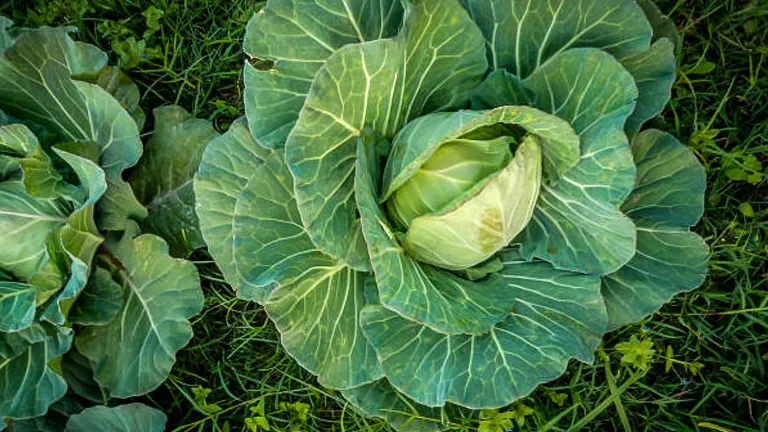
From soil preparation to advanced planting techniques and effective pest management, we’ll cover everything you need to know to manage your garden like a pro. Gear up, and let’s explore the essentials of cabbage care together.
Table of Contents
- Understanding Nutritional Needs
- Preparing to Plant
- Planting Techniques
- Care for Cabbages
- Pruning and Managing Growth
- Protect from Pests and Diseases
- Harvesting and Storing
- Troubleshooting Common Problems
- Conclusion
- FAQs
Understanding Nutritional Needs
Types of Cabbage
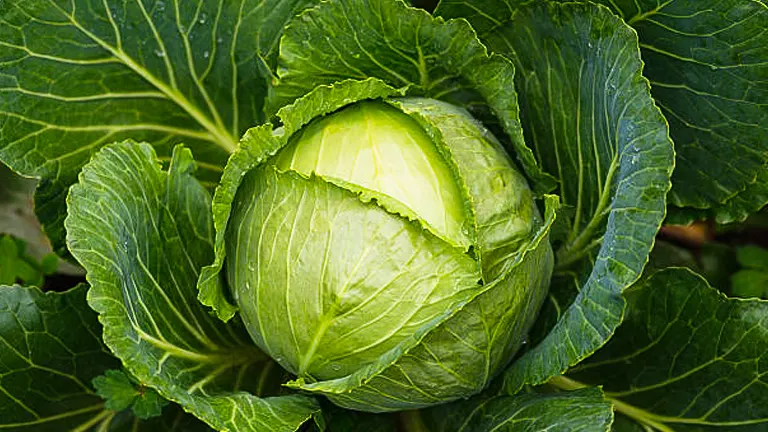
Cabbage, a cruciferous vegetable from the Brassica genus, thrives in diverse climates and comes in several varieties, each with unique nutritional profiles and culinary applications. The primary types include:
- Savoy Cabbage: Characterized by its crinkly, deep green leaves, Savoy cabbage is less dense than other types, making it particularly good for wrapping and stuffing due to its flexible texture. It thrives in colder climates and its flavor intensifies and sweetens after exposure to frost. It is rich in vitamins C and K, providing about 50% and 85% of the daily values per 100 grams, respectively.
- Red Cabbage: Recognized by its vibrant color, red cabbage contains anthocyanins, powerful antioxidants that are linked to numerous health benefits, including reduced inflammation and heart health protection. When cooked, its color can change depending on the pH value of the soil it was grown in; more acidic soils will typically yield a deeper red hue. It provides around 30% more vitamin C than green cabbage.
- Green Cabbage: This is the most common type and features a tight head of pale to dark green leaves. Known for its durability, it is ideal for a variety of cooking methods from raw in salads to fermented in sauerkraut. Green cabbage is a dietary staple in many cultures due to its high content of dietary fiber and essential vitamins. It is particularly noted for its high vitamin K content, necessary for blood clotting and bone health.
Comparative Table
| Variety | Optimal Climate | Flavor Profile | Nutritional Highlight | Cooking Uses |
|---|---|---|---|---|
| Savoy | Cold | Mild, sweetens post-frost | High in vitamins C and K | Stuffing, salads |
| Red | Variable | Earthy, peppery | Rich in antioxidants (anthocyanins) | Pickling, salads |
| Green | Cool | Peppery, sweetens when cooked | High in vitamin K and fiber | Braising, fermenting |
Seasonal Timing
- Early Spring Planting: Starting seeds indoors about 6-8 weeks before the last expected frost is ideal for early spring planting. This allows seedlings to develop in controlled conditions and be ready for transplanting once the frost threat subsides. The early start is beneficial for long season varieties like green cabbage, which take longer to mature.
- Late Summer Planting: For a fall harvest, direct seeding outdoors in mid to late summer is recommended, especially for fast-growing varieties like Savoy and Red cabbage. Cooler fall temperatures tend to enhance the natural sweetness of the cabbage, making them ideal for harvest before the first winter frost.
Preparing to Plant Cabbages
Soil Preparation
- Soil Enrichment: Begin by incorporating organic matter into the soil. Compost, aged manure, or leaf mold not only enriches the soil with essential nutrients but also improves its structure, increasing its ability to retain moisture and nutrients while ensuring it remains loose and well-aerated. For cabbage, which is a heavy feeder, this step ensures a continuous supply of the necessary nutrients during its growth cycle.
- pH Adjustment: Cabbage prefers slightly acidic to neutral soil, with an ideal pH range of 6.0 to 6.8. Testing your soil’s pH is crucial before planting. Adjust the soil pH by applying garden lime to increase the pH or sulfur to decrease it. This adjustment should be based on the results of a soil test, performed ideally a few months before planting.
Site Selection
- Sun Exposure: Choose a planting site that receives a minimum of six hours of direct sunlight daily. Full sun is crucial for cabbages as it helps develop strong, tight heads and enhances the plant’s natural disease resistance.
- Drainage and Airflow: Optimal drainage is vital to prevent waterlogging, which can lead to root rot and other fungal diseases. Ensure the planting site does not collect standing water and amend heavy clay soils with sand or organic matter to improve drainage. Additionally, sufficient space between plants and rows helps promote good airflow, which is essential for keeping the foliage dry and preventing the spread of diseases.
- Soil Texture and Fertility: Loamy soil is ideal for cabbage cultivation as it holds moisture well yet drains excess water. Before planting, ensure the soil is rich in organic matter. A balanced N-P-K (Nitrogen-Phosphorus-Potassium) fertilizer can also be added based on the soil test recommendations to ensure the soil is fertile enough to support cabbage growth.
Additional Considerations
- Crop Rotation: Avoid planting cabbage in areas where other Brassica plants (broccoli, Brussels sprouts, cauliflower) were grown the previous year. Crop rotation helps reduce the buildup of soil-borne pests and diseases.
- Microclimate Factors: Consider local microclimate factors such as wind exposure and proximity to structures or other plants. Protective barriers or companion planting might be necessary to mitigate strong winds or optimize space.
Planting Techniques
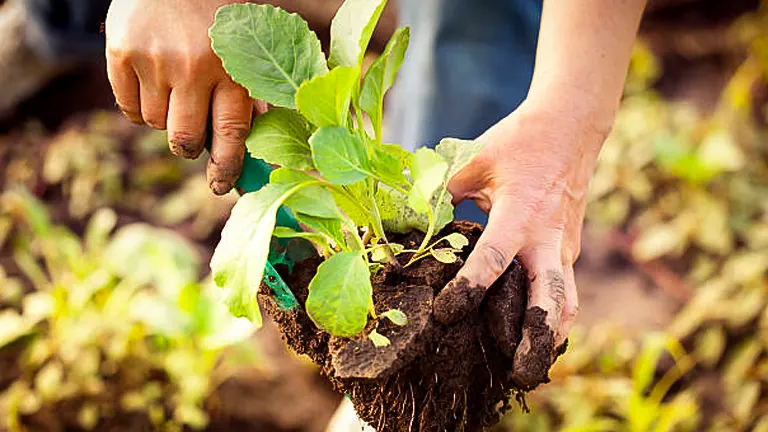
A successful cabbage crop hinges on correct planting practices and timing. Whether you start your seeds indoors or transplant them outdoors directly, preparation is key. For colder climates, beginning seeds indoors is recommended to extend the growing season. Plant the seeds in a sterile, soilless mix to prevent soil-borne diseases and keep the temperature consistently between 65 and 70°F (18-21°C). These conditions are essential for optimal seed germination. Once the seedlings develop 2-3 true leaves, they must gradually acclimate to outdoor conditions through a process called hardening off. This process involves exposing seedlings to increasing amounts of sunlight and cooler temperatures over a week to strengthen them before transplanting.
Key Planting Details:
- Temperature for Germination: Maintain temperatures between 65-70°F (18-21°C).
- Hardening Off: Acclimate seedlings to outdoor conditions over a week, starting with an hour or two of outdoor exposure and gradually increasing.
- Plant Spacing: Space seedlings 12-18 inches apart to allow for head formation.
- Row Spacing: Keep 24-36 inches between rows for adequate airflow and easy access.
Scientific Analysis and Nutrient Needs
| Nutrient | Application Rate (per acre) | Role in Development |
|---|---|---|
| Nitrogen (N) | 80-120 lbs | Promotes lush leaf growth; critical for photosynthesis |
| Phosphorus (P) | 40-60 lbs | Encourages root development and early maturity |
| Potassium (K) | 100-150 lbs | Enhances disease resistance, improves head quality |
| Calcium (Ca) | 80-100 lbs | Prevents tip burn and supports strong cellular walls |
| Magnesium (Mg) | 20-30 lbs | Key for photosynthesis and enzyme function |
Other Considerations:
- Direct Sowing vs. Transplanting: In warmer climates, direct sowing may be feasible. Sow seeds at a depth of ½ inch and thin seedlings to 12-18 inches apart. Transplanting offers more control over plant spacing and development, ensuring stronger starts.
- Mulching: Apply organic mulch around seedlings to suppress weeds, retain soil moisture, and regulate temperature.
- Frost Protection: Use row covers or cloches if temperatures are expected to drop below freezing early in the season.
Care for Cabbages
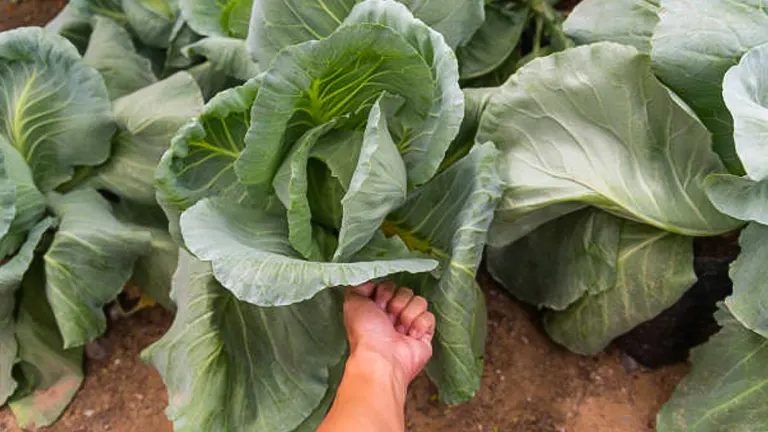
Effective care for cabbage involves ensuring the plants receive enough water and nutrients. Water the plants deeply once a week to ensure moisture reaches the roots, particularly important during the head formation stage. Increase the frequency during dry spells. Cabbage also requires regular nutrition due to its status as a heavy feeder. Starting with a balanced fertilizer three weeks after transplanting promotes healthy growth, and a second application may be necessary mid-season if growth appears sluggish.
Watering and Feeding Tips:
- Watering Frequency: At least once a week, providing about 1.5 inches of water
- Fertilization: Start with a balanced 10-10-10 fertilizer, applying three weeks after transplanting and possibly a second application mid-season
Weed Management: Keeping your cabbage patch free of weeds not only improves the aesthetic but also promotes healthier plants.
- Mulching: Apply a layer of organic mulch around plants to suppress weeds and retain moisture.
- Manual Weeding: Regularly remove weeds by hand or with a hoe, careful to avoid disturbing shallow cabbage roots.
Pruning and Managing Growth
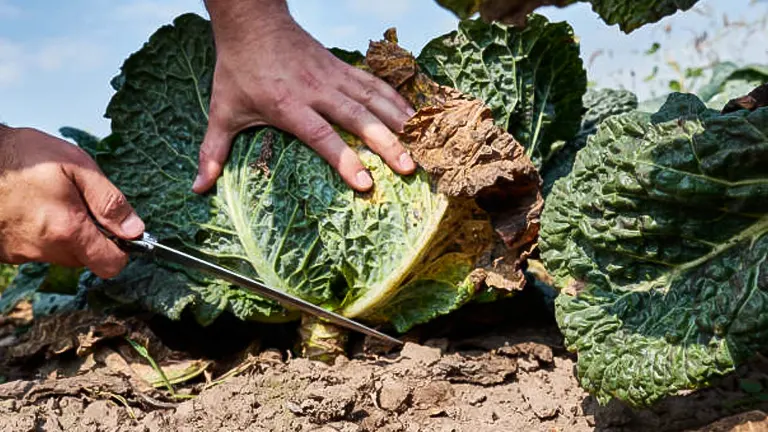
Pruning and thinning cabbage plants are crucial to managing growth and ensuring robust heads. Thinning helps reduce competition between seedlings for nutrients and space, leading to stronger, more productive plants. After transplanting, monitor plant growth carefully and thin out weaker seedlings to maintain optimal spacing. This allows the strongest plants to thrive without crowding.
Pruning involves removing damaged or diseased leaves throughout the growing season. This practice improves airflow around plants, reducing the likelihood of fungal infections while also promoting healthier growth. Additionally, carefully prune away outer leaves to encourage tighter head formation.
Tips for Pruning and Managing Growth:
- Thinning Seedlings: Thin seedlings to the appropriate spacing after they develop 2-3 true leaves.
- Removing Outer Leaves: Cut away damaged or diseased leaves promptly to prevent the spread of infection.
- Encouraging Tight Heads: Gently trim away excess foliage to focus the plant’s energy on head formation.
Protect from Pests and Diseases
Pests and diseases can devastate cabbage crops if not managed carefully. Common pests like aphids, worms, and flea beetles can quickly decimate plants. To minimize damage, inspect plants regularly and use barriers like row covers to prevent infestation. If pests are detected, use natural solutions like neem oil or insecticidal soap to control them. Crop rotation is also effective for preventing soil-borne diseases like clubroot and black rot.
Pest and Disease Prevention Strategies:
- Row Covers: Use floating row covers to keep pests away from seedlings.
- Neem Oil: Apply neem oil to deter common insects.
- Crop Rotation: Rotate cabbage with unrelated crops to minimize soil-borne diseases.
- Companion Planting: Grow aromatic herbs like dill or marigold near cabbages to repel pests.
Harvesting and Storing
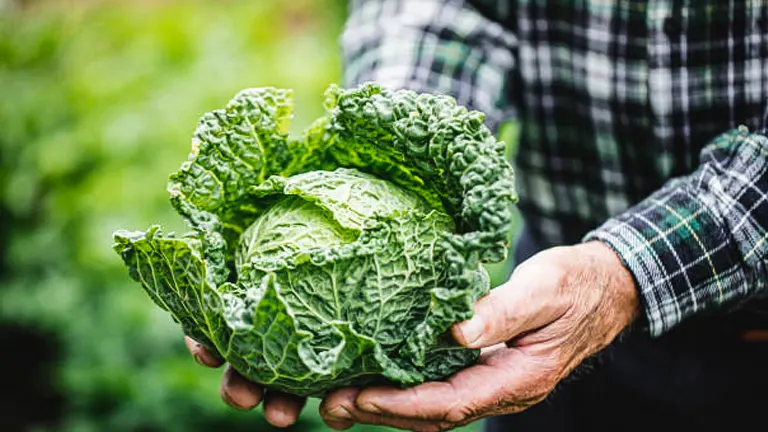
Harvesting cabbage at the right time is crucial for optimal flavor and texture. Cabbages are ready to harvest when the heads are firm and the base of the head feels solid when squeezed gently. Depending on the variety, this usually occurs within 70 to 85 days from transplanting. Harvest in the morning when the plant’s water content is highest, which ensures the crispest texture.
Harvesting Tips:
- Timing: Check for firmness of the cabbage head; it should feel dense and hard to the touch.
- Method: Cut the head from the base of the plant using a sharp knife. Leave a few outer leaves to protect the head and enhance its storage life.
After harvesting, it’s essential to store cabbage correctly to maintain its freshness. Cabbage can be stored in a cool, humid place for several weeks. For long-term storage, cabbage can be kept in a refrigerator or a root cellar where the temperature is just above freezing, and the humidity is high.
Storage Techniques:
- Short-term Storage: Store in a cool, humid spot for up to a few weeks.
- Long-term Storage: Keep in the refrigerator or a root cellar at temperatures just above freezing with high humidity. Wrap the heads in plastic to retain moisture if not consuming immediately.
- Preparation for Storage: Remove any loose or damaged outer leaves before storing. This helps prevent decay and preserves quality.
Troubleshooting Common Problems
Even with the best care, cabbages can encounter issues. Recognizing common problems early and knowing how to address them is key to maintaining a healthy crop. Some frequent challenges include splitting heads, which can result from sudden growth spurts often due to inconsistent watering. To prevent this, ensure regular, deep watering, especially during dry spells.
Common Issues and Solutions:
- Splitting Heads: Regular and consistent watering can prevent sudden splits in cabbage heads.
- Yellowing Leaves: This could indicate a nitrogen deficiency or overwatering. Adjust your watering schedule and consider a nitrogen-rich fertilizer application.
- Pests: Keep an eye out for signs of pests like holes in leaves or visible insects. Use organic pesticides as a first line of defense.
Related Post
- How to Fertilize Bougainvillea: A Complete Guide for Stunning Blooms
- How to Fertilize Apple Trees: Essential Tips for a Bountiful Harvest
- How to Fertilize Lemon Trees: Secrets for Thriving Citrus
- How to Fertilize Avocado Tree: A Step-by-Step Guide for Lush Growth
Conclusion
Growing cabbage like an expert is achievable with the right knowledge and dedication. Whether you are a novice gardener or an experienced green thumb, the secrets unlocked in this guide can lead to a rewarding gardening experience and bountiful harvests. Embrace the journey of cabbage cultivation, and enjoy the satisfaction of adding home-grown produce to your table.
FAQs
- What is the best time of year to start planting cabbage?
The optimal planting time varies depending on your climate, but generally, cabbage seeds should be started indoors 6-8 weeks before the last expected frost for a summer harvest, or planted directly outdoors in mid to late summer for a fall harvest. - How do I choose the right cabbage variety for my garden?
Consider your local climate and culinary preferences. For cooler climates, Savoy cabbage is robust and flavorful. For those who prefer raw cabbage in salads or for pickling, Red cabbage is ideal due to its vibrant color and high nutrient content. Green cabbage is the most versatile and suitable for various cooking methods. - How much spacing is needed between cabbage plants?
Typically, cabbage plants should be spaced 12-18 inches apart in rows that are 24-36 inches apart. This spacing allows adequate room for growth and airflow, which helps prevent disease. - What are the best companion plants for cabbage?
Cabbage does well when planted near herbs such as dill and thyme, which can help repel common pests. Other good companions include onions and potatoes, but avoid planting cabbage near strawberries or tomatoes. - How often should I water my cabbage plants?
Cabbage needs a consistent supply of moisture for optimum growth. Water your plants deeply about once a week, providing at least 1.5 inches of water each time. Increase watering during dry, hot periods to maintain moist soil. - What is the best way to prevent pests in my cabbage patch?
Utilize preventative measures such as floating row covers to protect plants from common pests like aphids and cabbage worms. Regular inspections and organic pesticides like neem oil can also be effective if pests are already present. - When is the right time to harvest cabbage, and how do I do it?
Cabbage is ready for harvest when the heads are firm and the base feels solid. Harvest by cutting the head at its base with a sharp knife, leaving a few outer leaves to protect the head if not using immediately. Early morning is the best time to harvest to ensure the heads are crisp. - How should I store cabbage to extend its freshness?
After harvesting, cabbage can be stored in a cool, humid place like a refrigerator or root cellar where temperatures are just above freezing. Wrap the heads in plastic or store in a perforated bag to retain moisture and keep them fresh for several weeks.
With these expert insights and tips, you’re well-equipped to start your cabbage growing journey. Remember, the secret to lush, healthy cabbage lies in careful planning, attentive care, and a little gardening passion. Happy gardening!

Kristine Moore
Forestry AuthorI'm Kristine Moore, a seasoned garden landscaping professional with over 30 years of experience. My extensive career has been dedicated to transforming outdoor spaces into stunning, sustainable landscapes. With a deep understanding of horticulture, design principles, and environmental stewardship, I have become a respected figure in the field, known for creating harmonious, visually appealing, and eco-friendly gardens. My commitment to excellence and continuous learning in landscaping trends and techniques has solidified my reputation as an expert in garden design and implementation.



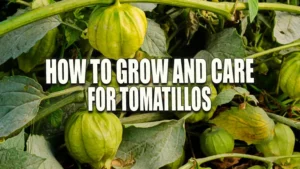





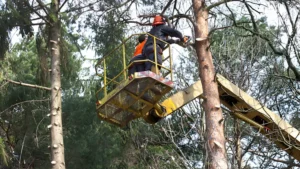

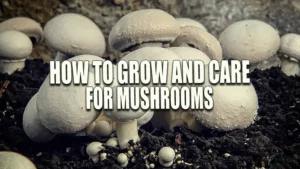

Leave your comment